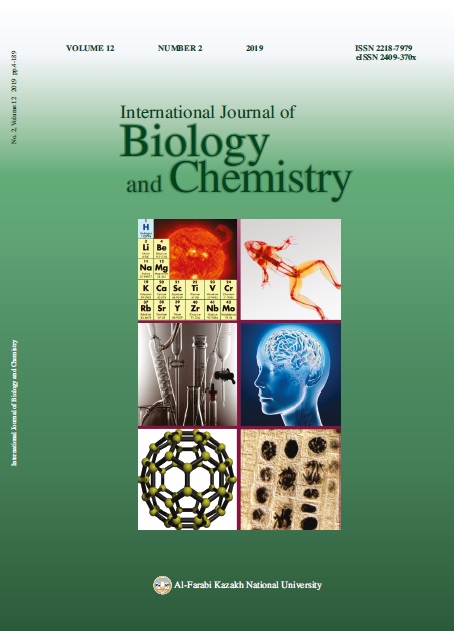Chamotte clay sorbent for the extraction of lead and cadmium ions from aqueous solutions
DOI:
https://doi.org/10.26577/ijbch-2019-i2-17Abstract
Nowadays the problem of wastewater pollution by heavy metal (HM) ions is extremely urgent. HM are harmful for health and environment, they are not biodegradable and can accumulate in plants and body. Clay minerals are known for their high adsorption capacity towards heavy metal ions. There are many research studies on appliance of different types of clays for wastewater treatment. Chamotte clay is a white heat-treated kaolin clay with stone properties, resistant to aggressive media, which contains highly dispersed hydroaluminosilicates. The clay does not require additional purification after secondary use. It is used in industry in large quantities, though wastes of clay are needed to be utilized. In current work chamotte clay wastes are offered to be used as a sorbent for lead (II) and cadmium (II) ions extraction. The choice of the ions is based on the high toxicity and abundance of these metals in wastewaters. Polivynylpyrrolidone (PVP) was used as a modifier to increase adsorption capacity of the clay. The extraction degree of ions by initial chamotte clay reaches (97 ± 7.2) % and (67 ± 6.0) % for Pb2+ and Cd2+ respectively. The modification with PVP increases the extraction degree of Cd2+ to (86.0 ± 6.4) %. The initial and modified clay was
characterized by scanning electron microscopy, energy dispersive spectroscopy and Fourier transform infrared spectroscopy methods. The adsorption process was carried out under static conditions at pH = 6 and T = 298 K, initial concentration of the metal ions was 10 mg/l. The optimal mass for the sorption of lead and cadmium ions was also determined during the study and is equal to1 g per 100 cm3 of solution. The use of chamotte clay as the basis for the development of sorbents helps reducing the cost of cleaning water bodies, and also allows solving the problem of wastes disposal.
Downloads
How to Cite
Issue
Section
License
ааа





